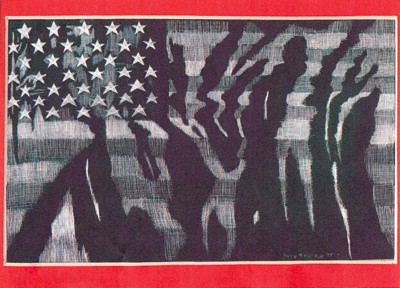All Nonfiction
- Bullying
- Books
- Academic
- Author Interviews
- Celebrity interviews
- College Articles
- College Essays
- Educator of the Year
- Heroes
- Interviews
- Memoir
- Personal Experience
- Sports
- Travel & Culture
All Opinions
- Bullying
- Current Events / Politics
- Discrimination
- Drugs / Alcohol / Smoking
- Entertainment / Celebrities
- Environment
- Love / Relationships
- Movies / Music / TV
- Pop Culture / Trends
- School / College
- Social Issues / Civics
- Spirituality / Religion
- Sports / Hobbies
All Hot Topics
- Bullying
- Community Service
- Environment
- Health
- Letters to the Editor
- Pride & Prejudice
- What Matters
- Back
Summer Guide
- Program Links
- Program Reviews
- Back
College Guide
- College Links
- College Reviews
- College Essays
- College Articles
- Back
Minorities in Entertainment MAG
Since its inception, the entertainment industry has been a powerful force in American society and culture. The media industry has multiple facets, including film, television, and music. Each is its own multibillion-dollar industry, with millions of Americans listening in, tuning in, and buying tickets. Studies show that 96.7 percent of American households have at least one television, and more than 1 billion movie theater tickets are sold each year. Clearly, the entertainment industry is incredibly powerful and influential in our society. One important type of influence the film and television businesses wield is the representation of minority races. The historically limited presence of racial minorities in film and television must be rectified in order to cast out race-related stereotypes and promote equality in our society.
In the past, the entertainment industry has done a poor job of accurately reflecting the racial makeup of our society. Actors were predominantly white. For example, on the hit 1990s show “Friends,” all six main characters and most of the supporting characters were white, even though the show was set in New York City, one of the most racially diverse cities in the world. Another, more recent, example is the HBO hit “Girls,” which takes place in racially diverse Brooklyn but was cast with all white lead actors.
The term “whitewashing” describes when a story that originally includes minority characters is adapted for white characters, or when white actors are cast to fill the once-minority parts. “Aloha,” directed by Cameron Crowe, is set in Hawaii, however, every character is Caucasian. One character that is supposedly Hawaiian and part Chinese is played by a white actress.
When minority actors are cast in film and television roles, their parts too often lack substance and originality. Most non-white characters reflect some sort of racial stereotype. For instance, too many African American female characters are written as “sassy” – a common trope in Tyler Perry’s movies.
Even “positive” racial stereotypes can be damaging. Too often Asian (Chinese, Japanese, Korean) and Indian characters are typecast as exceptionally smart, especially in math and science. This is seen on multiple popular television shows and movies, such as guest characters on “Modern Family.”
Typecasting in film and television pigeonholes people of
minorities into a certain idea of who they are or can be. It does not properly represent people of color as just as complex and diverse as Caucasians. This propagates a larger issue of compartmentalizing minorities outside of the entertainment industry and in society as a whole.
The incredible influence of the film and television industries in American society means that the ideals and values presented in the media reverberate in our culture. Therefore these industries have a responsibility to encourage awareness and respect for the racial diversity of this country. For example, the entertainment industry plays a big role in determining the standard of beauty in American culture. Our country is more racially diverse than ever, and beauty is expressed in many types of body colors, sizes, and shapes. Yet the majority of female characters in films and television are skinny, blonde, and Caucasian. This is the normalized cultural ideal of “beautiful,” and for most of us it is unattainable.
When the definition of beauty excludes the physical attributes of people of color, it perpetuates the idea that their race is not ideal or desirable. The majority of African American characters on TV have straight smooth hair, the opposite of the naturally coarse and curly hair that many African American people possess. Beyoncé Knowles regularly masks her natural hair with straightening irons and wigs. When she participated in a commercial for a hair product company, her hair was digitally manipulated to appear straighter and lighter than it is. The unrealistic and often “whitewashed” representations of beauty in the media creates an unhealthy sense of self-worth in viewers. The audience is influenced to believe that their own looks will never be as pretty or attractive, and their confidence and self-assurance are hindered.
When people watch a television show or movie, they are looking for stories and characters that they can relate to. However, most of the time in the entertainment industry, people of minority can’t find characters who look like them. When they do, too often those characters are whitewashed and racially stereotyped. With this underrepresentation comes the damaging message that minorities are not as important or as deserving as whites.
Although culture in the United States has come a long way from the days of slavery and segregation, our country still faces major racial issues. The entertainment industry’s inaccurate reflection of the many races that make up our society is a particularly troublesome issue that must be acknowledged and fixed. Real strides need to be made in the entertainment industry for larger and more comprehensive inclusion of the broad spectrum of people who consider themselves American.

Similar Articles
JOIN THE DISCUSSION
This article has 1 comment.

6 articles 0 photos 28 comments